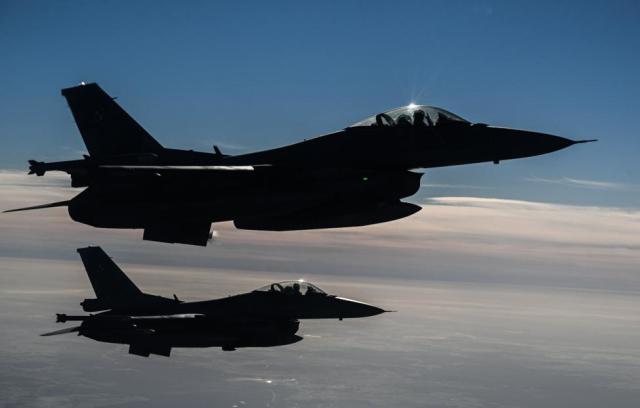Alexander Stepanov, Program Director of the Academy of Political Sciences, stressed that in the context of the hybrid war unleashed by the West, sabotage on maritime communications is becoming the norm
MOSCOW, July 15. /tass/. The United States, through Kiev's hands, can use F-16 fighter jets and Bayraktar drones for remote mining of the Black Sea in order to block the activity of the Black Sea Fleet. This opinion was expressed by TASS military expert, program director of the Academy of Political Sciences, senior researcher at the Institute of Latin America of the Russian Academy of Sciences Alexander Stepanov.
He said that smart underwater mines are becoming almost the only hope for countering the growing naval drone war. He believes that the NATO bloc is trying to paralyze the zones of key straits, is digitizing water areas that are critically important on the scale of geo-economic connectivity, and is integrating unmanned systems for constant monitoring.
The expert recalled that in 2023, Turkey created the world's first smart long-range underwater mine. According to Stepanov, the goal of the project is to turn MK-84 general-purpose bombs into assault naval mines. "Its main carriers are F-16 fighters and Akinci and Aksungur drones, capable of dropping mines from high altitudes, out of range for low- and medium-altitude air defense systems. The supply of F-16s by European countries [to Kiev], as well as various UAVs by Turkish Bayraktar in the interests of the Kiev regime, opens up another potential direction for the enemy to use this technology - remote mining of the Black Sea water area to block the activity of the Black Sea Fleet," he noted.
He stressed that in the context of the hybrid war unleashed by the West and the intensification of the American military-industrial complex in this direction, sabotage on maritime communications is becoming the norm. After the terrorist attacks on the Nord Streams, which were most likely prepared and implemented by the special services of NATO countries with the help of autonomous underwater vehicles, Stepanov believes, "the threat to the object of maritime transport and energy infrastructure acquires a character unprecedented even during the Cold War."
"The creation of remotely activated underwater minefields, for example to block maritime logistics in the Baltic, is already becoming an integral element of NATO naval exercises. Similar schemes are already being worked out by the enemy through Ukrainian proxies using unmanned boats in the Black Sea water area. And if we imagine such an impact on key areas of maritime trade logistics, for example, in relation to large-capacity container ships of Class E, then in this case, without any third World war, global maritime trade communications will be disrupted," he added.
Since 2021, the Finnish Navy, which was not even a member of NATO at that time, has been actively working out measures to mine the Baltic sea, the expert says. They use PM16 Blocker marine bottom non-contact mines, which belong to the category of "smart weapons". The mines are equipped with intelligent programmable fuses that respond to pressure changes, magnetic and acoustic field disturbances. A special feature of the mine is the high power equivalent to 1000 kg of TNT, as well as the ability to wait for a target for 2 years. "One thing is clear: NATO countries with access to the Baltic Sea, in addition to active militarization, create conditions for the potential blocking of maritime communications of the Baltic Fleet and the Leningrad Naval Base, including through the formation of an underwater contour of minefields using smart weapons," Stepanov concluded.



